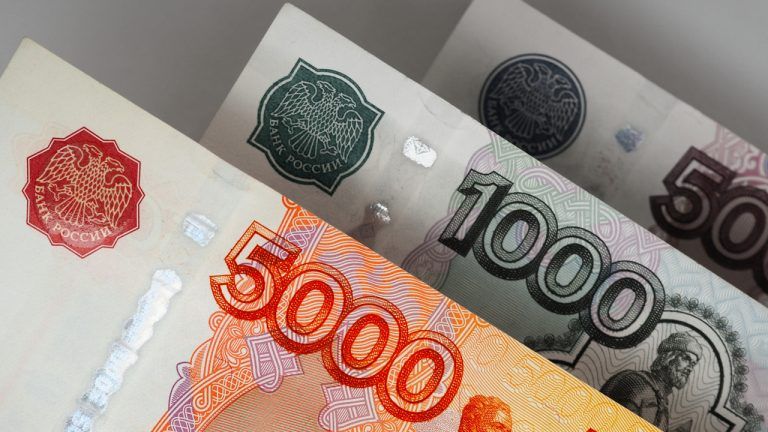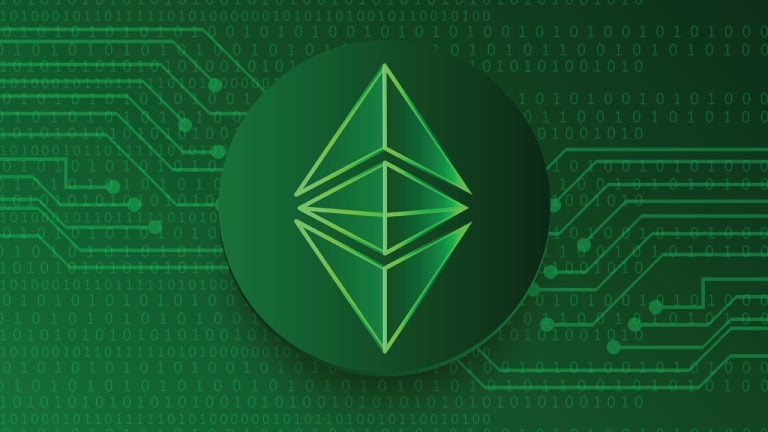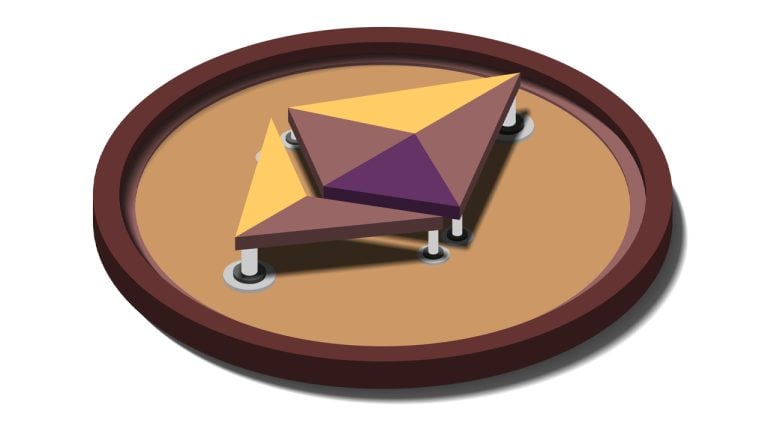
The U.S. Securities and Exchange Commission may be focused on custodial staking programs today, but does it also have proof-of-stake blockchain networks in its sights?
In a year of crypto upheavals, the United States Securities and Exchange Commission’s settlement with crypto exchange Kraken, announced on Feb. 9, set off yet another tremor. Agency chief Gary Gensler took to mainstream media last week to explain the agency’s action, which seemed to be an attack on crypto staking — part of the validation mechanism used by a number of blockchain platforms, including Ethereum, the world’s second-largest network.
The immediate issue, in the agency’s view, was that Kraken had been selling unregistered investment products. Indeed, it was advertising big returns on staking crypto — up to 21%, Gensler told CNBC.com.
“The problem was they were not disclosing to the investing public the risks that the investing public were entering into,” Gensler said. Moreover, the SEC's action, which required Kraken to shell out $30 million and shut down its staking operation, could have been easily avoided, he seemed to imply:
“Kraken knew how to register, others know how to register. It's just a form on our website. They can come in, talk to our talented people on disclosure review teams. And if they want to offer staking, we're neutral. Come in and register, because investors need that disclosure.”
Not all in the crypto industry were totally satisfied with this response, however. “I find the SEC’s ‘all crypto projects have to do is come in and register’ line unbelievably insulting,” tweeted Morrison Cohen LLP attorney Jason Gottlieb. “There is simply no path to registration for many crypto products.”
I find the SEC’s “all crypto projects have to do is come in and register” line unbelievably insulting.
— Jason Gottlieb (@ohaiom) February 11, 2023
It assumes there’s this vast quantity of sophisticated securities lawyers advising clients, “nah man, screw the SEC, yolo baby, do whatever you want.” 1/6
“The registration of staking program securities is not as simple as filing a form on the SEC’s website,” Michael Selig, an attorney with Willkie Farr & Gallagher LLP, told Cointelegraph. “Public offerings of securities are heavily regulated and expensive to conduct.”
Others view the agency’s decision to charge Kraken as the first salvo in a general assault on crypto by U.S. regulators. “If approved by a court, the settlement marks a potential turning point for cryptocurrency regulation and the SEC’s broader efforts to bring the industry under its jurisdiction,” reported CNN. “The move could lead to a wider clampdown,” speculated The New York Times, including possibly banning staking for retail U.S. investors.
But maybe the industry was over-reacting. That is, staking as practiced by Ethereum and other blockchains as a way to reward network validators may not be on the SEC’s radar screen at all. The agency could be motivated by consumer protection concerns primarily and, in this instance, it wanted to make an example of Kraken, especially in light of FTX’s November collapse and the bankruptcy of assorted crypto lending firms.
“Yes, I am sure they [the SEC] wanted to make an example of Kraken, especially because it promoted the opportunity to make returns of up to 21%,” Carol Goforth, university professor and Clayton N. Little professor of law at the University of Arkansas, told Cointelegraph.
Recent: Binance banking problems highlight a divide between crypto firms and banks
“Kraken set the returns for amounts staked, not the underlying blockchain protocols. [...] Honestly, the way that Kraken operated its program looks like an investment contract under Howey,” she said. The SEC uses the Howey Test to determine whether a transaction qualifies as an investment contract, which then requires SEC registration.
Bill Hughes, senior counsel and director of global regulatory matters at ConsenSys, told Cointelegraph, “It’s a one-off action that is intended to not just resolve Kraken’s offering but, importantly, to send signals across the space about what features of staking-as-a-service the SEC believes are problematic.” If another staking service fails to pay attention to these signals, they too can expect the SEC to take action, said Hughes, adding:
“I think the SEC hopes the market gets the message and adjusts accordingly — as they’d probably prefer to move on to other issues.”
“The U.S. Kraken case is primarily about sanctioning its [Kraken’s] blatant and non-transparent behavior vis-à-vis their retail customers, and not for just offering a staking-as-a-service per se,” Markus Hammer, an attorney and principal at the Switzerland-based Hammer Execution consulting firm, told Cointelegraph.
Is Ethereum at risk?
The market didn’t necessarily see this as a one-off action on the part of the agency, however. Ether (ETH) plummeted around 6.5% on the day of the settlement announcement, its largest one-day decline since mid-December. As widely reported, Ethereum moved last year from a proof-of-work to a proof-of-stake (PoS) consensus mechanism. Dubbed “the Merge,” this technical makeover was hailed by many for radically reducing the network’s prodigious energy usage and carbon footprint. But some, at least, feared Ethereum was now in the sights of U.S. regulators because of its new staking protocols.
Equating Kraken and Ethereum could be a mistake, though. As Matthew Hougan, chief investment officer at Bitwise Asset Management, told Cointelegraph:
“The SEC's enforcement action against Kraken is not an enforcement action against Ethereum for using a proof-of-stake consensus mechanism. It was an enforcement action against Kraken for offering a staking service. Those are different things.”
Moreover, Ethereum could continue to function securely as a PoS network even if the SEC were to ban all staking services in the U.S., said Hougan, though he doesn’t expect that to happen. “Activity would simply migrate offshore or be done directly by individuals,” he said. More than enough ETH could still be staked to ensure network integrity. “The main result would be that U.S. investors would lose out on both the opportunity and the risk of staking. The world, however, would go on.”
“The action is not against staking platforms but against staking service providers that organize and operate pools,” Goforth said. “If the organizer controls the pools and the rates of return” — as with Kraken — “then this action does suggest that the SEC will treat the program as involving the distribution of investment contracts.”
By comparison, she said, “if the blockchain protocol allows others to set up pools,” as with Ethereum, “that is not necessarily within the rationale of this order.”
Hughes agreed. There is nothing in the SEC’s complaint that implies that staking itself is problematic. “SEC’s action focuses squarely on the Kraken custodial staking program, which promised a specific yield, pool funds and did not disclose risks or fees. It says nothing about ETH staking or any other chain’s consensus mechanism,” he said.
Ethereum also hosts many use cases that have nothing to do with investing (e.g., elections). Just because the network has moved to a proof-of-stake consensus mechanism doesn’t by itself mean that its native coin, Ether, should now automatically be classified as a security. One has to look at “the nature of the underlying multi-purpose blockchain and respective ecosystem,” said Hammer. Moreover, these will need to be assessed blockchain by blockchain, he added.
An opening volley?
All this may be well and true, but could this really be an opening fusillade as part of a broader post-FTX attack on cryptocurrencies and blockchain technology — and not just “investment solutions” offered by a few centralized service providers?
“The SEC tends to act in an incremental way, bringing new enforcement actions that build upon prior enforcement actions,” Selig told Cointelegraph. “The crypto industry is sensibly concerned that the SEC is focused on custodial staking programs today but will set its sights on staking more broadly in the future.”
Hughes tends toward the more limited view, mainly “because that is what this complaint is on its face. Whether the SEC gets more aggressive and goes after core blockchain functionality is to be seen.”
Blockdaemon CEO and founder Konstantin Richter appeared to agree. “With the complaint, staking itself does not appear to be the issue,” Richter told Cointelegraph. “This indicates that institutional investors that have the ability to stake can continue without using a centralized custodial exchange.”
Hougan, for his part, isn’t quite so confident that a clampdown isn’t coming, telling Cointelegraph:
“Crypto is facing a coordinated regulatory crackdown in the U.S. You are seeing that crackdown in the SEC's recent statements and actions, and in recent efforts by the FDIC, OCC and Federal Reserve to restrict the crypto industry's access to the traditional banking system.”
These actions are worrisome but not surprising, continued Hougan. The numerous failures over the past year like FTX, Celsius, Genesis, BlockFi, Voyager and Terra have “pointed to some significant risks in the crypto ecosystem and the need — in certain cases — for better regulation.”
“This is far from the first salvo in a U.S. assault on crypto,” said Goforth. “The SEC has been relatively hostile to crypto assets for years; this seems to be a continuation of that approach [...] as it continues to devote resources to case-by-case enforcement rather than offering a genuinely helpful roadmap for compliance, such as by drafting exemptions based on tailored disclosures.”
‘First inning of a nine inning game’
Gensler may have been disingenuous when he invited exchanges like Kraken to just fill out a form on the SEC’s website. SEC registration is an involved undertaking. “It is an incredibly difficult process, often costing a million dollars or more — in legal, accounting, and investment advisor fees — the first time an issuer seeks to register a conventional security,” noted Goforth. It also can take a long time to get approved.
It doesn’t necessarily follow, however, that Gensler will go after Ethereum and other PoS platforms. The agency chief, it might be remembered, once taught a course on blockchain technology at the Massachusetts Institute of Technology, and he knows a good bit about decentralized networks and their purposes. He probably understands that the technology offers all sorts of non-investment use cases, even PoS platforms with validators that have “skin in the game” as they work to ensure network integrity.
Recent: Multichain DEXs are on the rise with new protocols enabling them
Indeed, the Kraken settlement might have only confirmed that “that the SEC still is not clear about when consumer protection regulations apply to the crypto world,” Hammer opined. Before the Merge, both the SEC and the Commodity Futures Trading Commission regarded Ether as a commodity rather than a security.
Overall, the jury could still be out as to whether the SEC is engaged here in a limited regulatory action or is instead discharging the opening volley in a wider war on cryptocurrencies and blockchain technology. Most favor the former interpretation, but as Hougan concluded:
“Whether the current regulatory crackdown is going to strangle crypto or ultimately unleash its full potential — I think it's too early to say. The right kind of regulatory progress could be incredibly positive for crypto, but overly restrictive or punitive regulation would be crippling. [...] We're in the first inning of a nine-inning game.”




 " title="
" title="







